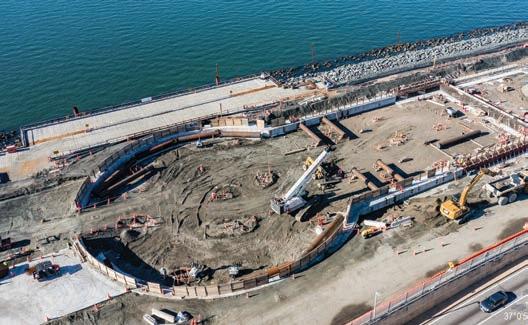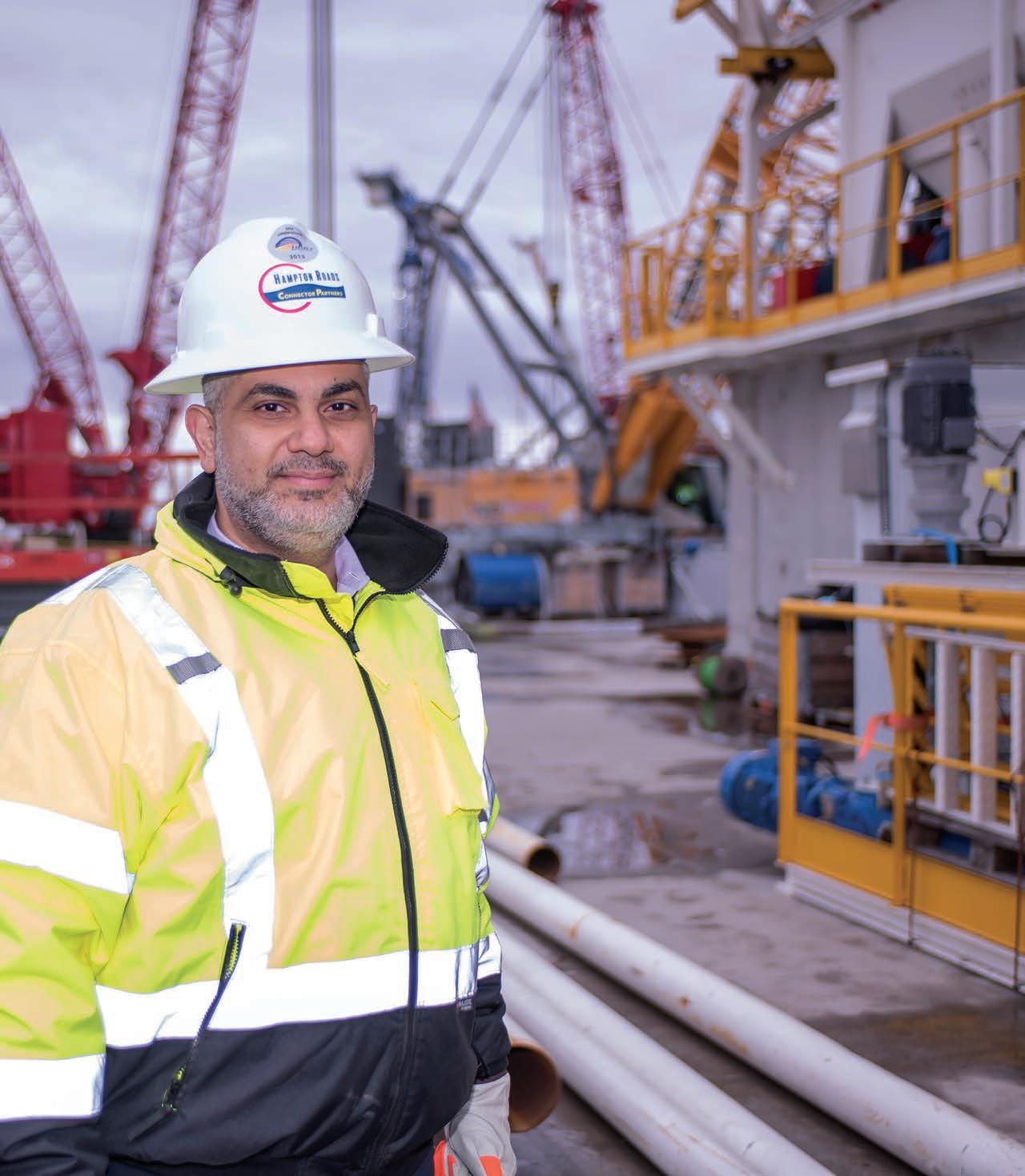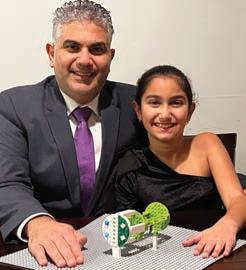
2 minute read
Preparing for Mary’s Arrival at North Island
George Mankarous
HRCP Project Engineer
Advertisement
Mary will excavate and construct the first tunnel as she heads from the South Island to the North Island. Meanwhile, crews are busily preparing the North Island “receiving pit” for Mary’s arrival.
To accommodate the two new tunnels, the North Island was nearly doubled in size with the addition of 15 acres. Once the expansion was completed, crews then prepared for excavating a specific area of the newly laid soil to create the TBM receiving pit. While the TBM launch pit was constructed of three overlapping circles in a peanut shape, the receiving pit consists of just one circle adjacent to a rectangle, similar to a keyhole shape. This design serves multiple purposes, with the rectangular portion both providing space to turn the TBM around and also accommodating the future approach roadway for the new tunnels.
The slurry walls, which form the perimeter of the receiving pit, are designed to hold back the soil and groundwater to allow crews to excavate within the structure. After installing a capping beam around the perimeter of the slurry walls , crews will excavate the receiving pit to a depth of 75 feet. Then, a specially engineered waterproofing system will be installed to control groundwater from seeping into the pit over its 100-year design life. This system, comprised of geo-textile material, waterproof PVC membrane, water-stop barriers and seals, is installed on the walls and floor of the shaft. Finally, crews will construct an eight-foot-thick reinforced concrete slab at the base of the receiving pit.

Traveling at up to fifty feet per day, depending on soil conditions and maintenance requirements, Mary will complete her 8,000-foot journey to arrive at the North Island after approximately one year. After breaking through into the receiving pit, Mary will be turned 180 degrees and repositioned to begin boring the second tunnel. This turn-around process, including the shield and four trailing gantries that make up Mary, will take roughly six months. Then Mary will be on her way back to the South Island, as she builds the second tunnel.
Lego Hrbt Contest Winner

Foran internal HRBTProject contest, team members and their familieswere recently invited to design a Lego® structure, using a maximum of 30 pieces, that is representativeoftheproject.
George’s ten-year-old daughter Lavenia, a skilled Lego® builder, createdthewinningentry:areplica of“Mary,theTunnelBoringMachine,”incorporatingtheTBM’s blue,white, and green cutterhead aswell as the trademark light-greencoloroftheTBMmanufacturerHerrenknecht.
family!
Egyptian-born George Mankarous grew up surrounded by ancient structures in Luxor, the old capital city of Egypt. Inspired, he pursued his architectural engineering degree and has been building large-scale projects ever since. From Egypt to Qatar, George made his way to the United States in 2019. George and his family lived in the Boston area for several years when the call of a big challenge brought him to Hampton Roads and the HRBT Expansion Project.
George is a project engineer responsible for the 19 new buildings and the internal structures for the tunnel approaches on both islands, as well as the renovation of the existing HRBT administration building. He is excited about witnessing the tunnel boring part of this project.

George and his wife have three beautiful daughters, each born in a different country, with his newest addition a true Hampton Roads-born native. His family enjoys living close to the beach and they’ve made a lot of new friends here, so they are excited to call Hampton Roads home.
George and his daughter Lavenia partnered to construct this winning 30 piece Lego® structure.






